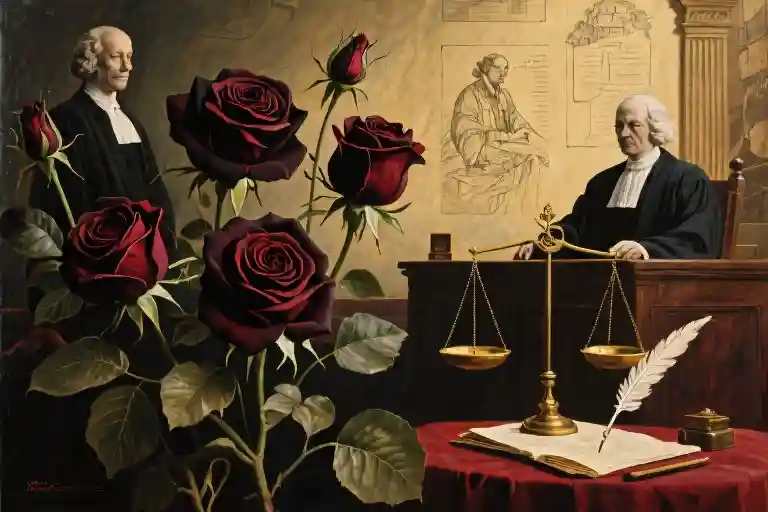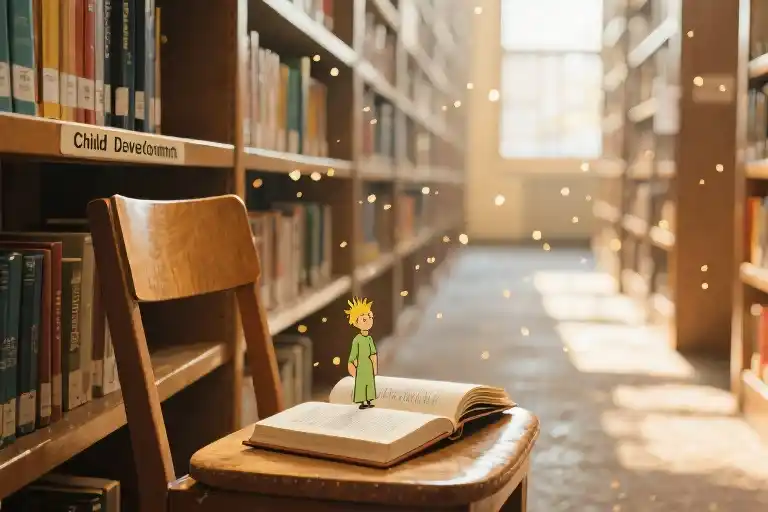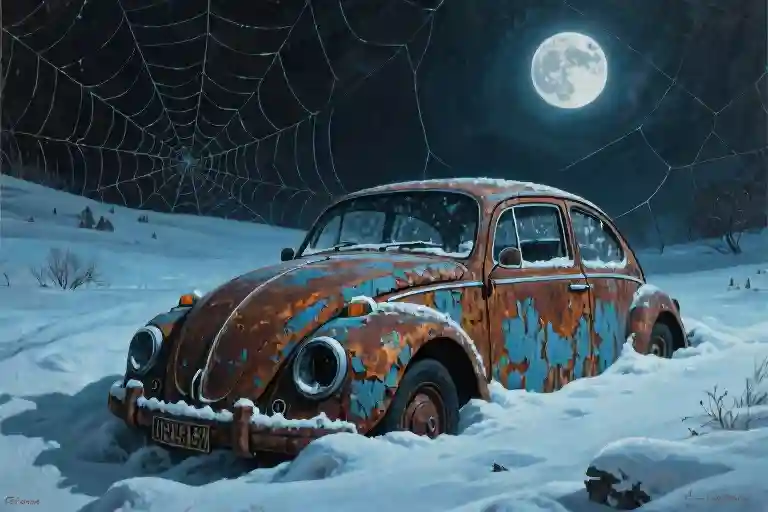In the summer of 1857, a Paris courtroom became the unlikely stage for one of literature’s most paradoxical trials. Ernest Pinard, the imperial prosecutor, held up a slender volume of poetry as if presenting evidence of a crime. His accusation wasn’t merely about obscenity—it cut deeper. “These poems corrupt not through fantasy,” he declared, “but through their unbearable realism.” The book in question? Charles Baudelaire’s Les Fleurs du Mal (The Flowers of Evil), a work that would be condemned as “an offense against public morals” yet ultimately triumph as a cornerstone of modern art.
What makes this moment extraordinary isn’t just the trial’s outcome—six poems banned, the author fined 300 francs—but the peculiar nature of the charges. In an era when romantic idealism dominated literature, Baudelaire’s unflinching gaze at urban decay, erotic obsession, and bodily decay struck authorities as more dangerous than mere fiction. Pinard’s prosecution transcripts reveal genuine alarm at how “the poet’s clinical description of rotting flesh (A Carcass) could make readers confront what polite society insists we ignore.”
Fast-forward to today, and you’ll find this once-notorious collection occupying honored places in university syllabi and museum exhibitions. The same lines that horrified 19th-century jurors now appear in advertising campaigns and song lyrics. This dramatic reversal begs the question: How did a book deemed “depraved” become required reading for understanding modern culture?
Three critical dimensions emerge from this contradiction:
- The Trial’s Lasting Shadow: The 1857 prosecution unintentionally cemented Baudelaire’s reputation as an artistic revolutionary. As T.S. Eliot later observed, “The scandal proved The Flowers of Evil was doing its job—art should disturb the comfortable.”
- Aesthetic Innovation: Beyond its controversial content, the collection pioneered literary techniques that reshaped Western art. Baudelaire’s “correspondences” theory (linking sensory experiences across smell, color, and sound) directly inspired Symbolist painters like Gustave Moreau.
- The Censorship Paradox: Historical attempts to suppress the work only amplified its influence. When the banned poems were finally republished in 1949, critics noted how their “forbidden” status had fueled decades of underground circulation among avant-garde circles.
Standing before his judges, Baudelaire defended his work as “a mirror held up to nature’s darkest corners.” That mirror continues to reflect our evolving relationship with artistic freedom—a conversation that resurfaces whenever societies grapple with works deemed “too real” for public consumption. From the 2015 Charlie Hebdo attacks to contemporary debates over trigger warnings in literature, the trial of The Flowers of Evil established a framework we still use to negotiate art’s right to unsettle us.
The Trial: Poetry in the Dock
On August 20, 1857, a Paris courtroom became the unlikely stage for one of literature’s most consequential battles. Not against a criminal, but against a book—Charles Baudelaire’s The Flowers of Evil. The prosecutor, Ernest Pinard, stood before the judges with a peculiar accusation: these poems weren’t just immoral, they were dangerously real.
The Prosecutor’s Paradox
Pinard’s argument contained a revealing contradiction. While condemning the collection’s ‘obscenity,’ he devoted equal energy to attacking its unflinching realism. “These poems don’t merely describe vice,” he insisted, “they document it with clinical precision—making corruption tangible to ordinary readers.” This fear of art’s documentary power—that truth itself could be obscene—would echo through censorship debates for centuries.
Second Empire Anxieties
Context explains the overreaction. Napoleon III’s regime (1852-1870) prized social stability after revolutionary turmoil. The same year saw:
- Gustave Flaubert tried for Madame Bovary‘s ‘moral poison’
- New laws punishing ‘outrages against public decency’
- Crackdowns on bohemian gatherings in Baudelaire’s Latin Quarter
A government obsessed with surface propriety couldn’t tolerate poetry exposing society’s psychological underbelly.
The Verdict’s Irony
Judges banned six poems including:
- “Lesbos” (lesbian desire)
- “The Vampire” (sadistic eroticism)
- “To She Who Is Too Gay” (alleged homosexual subtext)
Baudelaire received a 300-franc fine (≈$1,800 today)—but the trial backfired spectacularly. Sales surged as readers sought the ‘forbidden’ verses, and the remaining poems gained mythic status. As critic Théophile Gautier noted: “They wanted to kill the flowers, but only succeeded in watering them with scandal.”
Legacy of the Censors
Modern scholars see the trial as:
- A landmark case in art’s right to depict uncomfortable truths
- Proof that banning often amplifies a work’s influence
- The birth of ‘decadent’ as a defiant artistic badge
What began as moral panic became Baudelaire’s unwitting marketing campaign—the original ‘streisand effect.’ The very realism that terrified Pinard now defines the collection’s enduring power.
The Revolutionary Nature of The Flowers of Evil: Why It Had to Be Banned
The Aesthetic Shock of A Carcass
Among the six poems banned in the 1857 trial, A Carcass (Une Charogne) stands out as particularly scandalous to 19th-century sensibilities. Baudelaire’s unflinching description of a decomposing animal carcass—”And the sky watched that superb cadaver/Blossom like a flower”—was deemed morally corrosive not for its vulgarity, but for its artistic brilliance in equating physical decay with lyrical beauty.
This poem exemplifies Baudelaire’s revolutionary technique:
- Sensory juxtaposition: Blending putrid imagery (“swarming flies buzzing over rotten bowels”) with romantic devotion (“My love, you know I’ve kept the form and divine essence/Of my decomposed love!”)
- Symbolist prefiguration: The carcass transforming into “flowers of evil” anticipates the movement’s core principle—finding beauty in corruption
- Modernist rupture: Breaking from Lamartine’s nature worship (compare Le Lac‘s “O time, suspend thy flight!”) with urban grotesquerie
The Vampire and the Birth of Black Romanticism
The banned poem The Vampire (Le Vampire) escalated Baudelaire’s confrontation with religious morality through:
- Sacrilegious eroticism: “You who, like a knife/Came plunging into my grieving heart” inverted Catholic imagery
- Psychological realism: Depicting toxic relationships decades before Freudian analysis
- Gothic innovation: Transforming folkloric vampires into metaphors for emotional parasitism
Contemporary critics particularly recoiled at Stanza 4’s confession: “I begged the swift poniard/To win me my freedom/I asked perfidious poison/To aid my cowardice.” This explicit portrayal of suicidal despair violated Romanticism’s therapeutic ideals.
The Forbidden Six vs. Mainstream Poetry
A comparative analysis reveals why these poems provoked unique outrage:
| Feature | Baudelaire’s Banned Poems | Lamartine’s Poetic Meditations |
|---|---|---|
| Themes | Urban decay, erotic damnation | Rural nostalgia, spiritual comfort |
| Imagery | “Maggots like black liquid” (A Carcass) | “Pure waters mirroring heaven” (The Lake) |
| Purpose | Expose life’s contradictions | Affirm moral order |
This table illustrates how Baudelaire’s “excessive realism”—his insistence on showing worms alongside roses—directly challenged poetry’s role as societal comforter.
The Lasting Impact of Censorship
Paradoxically, the banned poems became the most influential:
- Artistic legacy: Salvador Dalí illustrated A Carcass in 1936, cementing its Surrealist credentials
- Legal precedent: The 1949 overturning of the ban established France’s “essential literary value” defense for controversial works
- Cultural shift: These very poems now appear on France’s baccalaureate literature syllabus
As critic Jean-Paul Sartre observed: “They tried to bury Baudelaire’s flowers, not realizing they were seeds.” The poems’ journey from courtroom evidence to classroom texts proves that artistic revolution often wears the mask of scandal.
From Ban to Canon: Art’s Poetic Justice
History has a peculiar way of correcting its mistakes. What Parisian authorities attempted to suppress in 1857 became the very foundation for revolutionary art movements. The banned verses of The Flowers of Evil didn’t disappear—they multiplied, seeping into the consciousness of generations through poetry, painting, and later, avant-garde manifestos.
The Symbolist Bible
Within decades of the trial, Baudelaire’s condemned work became sacred text for the Symbolists. Paul Verlaine carried tattered copies to cafés, declaring Baudelaire “the first seer” who revealed how poetry could transcend literal meaning. Stéphane Mallarmé’s famous Tuesday Gatherings featured ritual readings of the banned Lesbos, now analyzed not for indecency but for its pioneering use of synesthesia—that revolutionary technique where perfumes, colors and sounds echo one another.
“To correspondences Baudelaire gave the name suggestive magic,” Mallarmé wrote in 1896, “and we’ve spent thirty years unpacking what the prosecutor called ‘dangerous realism’ was actually the birth of modern poetry.”
Paintbrush Alchemy: Visual Artists Respond
Gustave Moreau’s The Apparition (1876) might stand as the ultimate visual rebuttal to Pinard’s accusations. The watercolor—depicting Salome mesmerized by John the Baptist’s floating head—directly channels Baudelaire’s Dance of Death. Where prosecutors saw obscenity, Moreau found spiritual transcendence, translating poetic lines about “jeweled eyes” and “fatal ecstasy” into swirling gold leaf and crimson washes.
Odilon Redon took this further in his Noirs series. Those haunting charcoal visions of eyeball balloons and spider-faced priests? They’re essentially illustrations of Baudelaire’s Spleen poems—the very works deemed “morbid” in court now fueling radical visual symbolism.
Surrealism’s Unexpected Patriarch
When André Breton drafted the Surrealist Manifesto in 1924, he shocked colleagues by naming Baudelaire—not Rimbaud or Lautréamont—as “the original explorer of the unconscious.” The automatic writing experiments? Inspired by Baudelaire’s Paris Spleen prose poems. Those jarring juxtapositions in Dalí’s paintings? Precursors exist in lines like “My love is a decomposing swan / Reflected in your eyes of violet.”
Even the trial itself became surrealist fodder. Max Ernst’s 1926 collage The Preparation of Bone Glue superimposes courtroom sketches over pages from Les Fleurs du Mal, suggesting censorship attempts always backfire—the banned fragments grow more potent when readers must imagine them.
The Irony of Influence
Today, the six banned poems are among the most studied. The Carcass (La Charogne), once condemned for depicting lovers beside a rotting animal, now appears in art school curricula worldwide as a masterclass in metaphorical alchemy. That “dangerous realism” prosecutors feared became textbook symbolism—the very quality that secured Baudelaire’s immortality.
Perhaps the final revenge belongs to time itself. In 1949, France’s Supreme Court posthumously overturned the 1857 verdict. The same nation that fined Baudelaire 300 francs now prints his face on postage stamps, while Pinard survives only as a legal footnote—the man who accidentally made poetry dangerous again.
The Trial Continues: Modern Dilemmas of Artistic Freedom
Nearly two centuries after Baudelaire stood trial, the debate over artistic expression versus social morality remains startlingly relevant. The 1857 prosecution of The Flowers of Evil established a troubling precedent – that art could be criminalized not just for obscenity, but for holding up too accurate a mirror to society. This chapter examines how contemporary censorship battles echo that Paris courtroom drama, proving Baudelaire’s trial was never truly concluded.
When Satire Becomes Sacrilege: The Charlie Hebdo Case
The 2015 attack on French satirical magazine Charlie Hebdo exposed raw nerves about artistic freedom that Baudelaire would have recognized instantly. Like Pinard’s prosecution, the controversy centered on whether art becomes dangerous when it strips away societal pretenses. The magazine’s caricatures of religious figures sparked violent backlash, raising painful questions: Does free expression include the right to offend? Where does critique end and hate speech begin?
Key parallels emerge between the two French cases:
- The ‘too real’ accusation: Both Baudelaire’s poetry and the cartoons were attacked for exposing uncomfortable truths
- Moral panic: Each incident revealed society’s fear of art that dismantles sacred cows
- Unintended consequences: The prosecutions amplified the works’ influence (sales of The Flowers of Evil surged post-trial; “Je Suis Charlie” became a global free speech rallying cry)
Digital Age Censorship: China’s Literary Purges
Modern China’s strict internet content controls demonstrate how Baudelaire’s “decadent” label persists in new forms. Since 2017, Chinese regulators have removed thousands of web novels for containing “dark elements” – a vague category encompassing everything from supernatural themes to realistic depictions of social problems. This digital book burning mirrors the 1857 ban in concerning ways:
| 1857 France | 21st Century China |
|---|---|
| Banned 6 poems for “corrupting morals” | Blacklists novels for “harmful values” |
| Targeted urban realism | Censors “negative energy” content |
| Fined the author 300 francs | Fines platforms up to ¥30,000 per violation |
The common thread? Both regimes feared art’s power to shape perceptions of reality.
Europe’s Cultural Exception: Protection or Censorship?
The EU’s “cultural exception” policies present a more nuanced modern approach. Designed to protect local arts from American media dominance, these rules reveal how even well-intentioned protections can limit expression. Recent cases show the dilemma:
- Film ratings: Some European countries ban films for political content under cultural protection laws
- Art funding: Controversial works risk losing subsidies if deemed “against European values”
- Platform regulation: The Digital Services Act requires removal of “harmful” content within 24 hours
This creates a Baudelairean paradox – the same systems that safeguard art from market forces may also sanitize it.
The Enduring Questions
As we navigate an era of cancel culture, AI-generated art, and global content platforms, Baudelaire’s trial forces us to confront:
- Who gets to decide what art is “too real” or “too dangerous”?
- Can any society tolerate art that reflects its ugliest truths?
- Does digital censorship differ fundamentally from 19th century book burning?
The flowers of evil still bloom in our digital age. Their thorns remain sharp enough to draw blood from any society that tries to uproot them.
The Trial That Never Ends: Art’s Eternal Dilemma
The ghost of Ernest Pinard, the 1857 prosecutor who condemned Baudelaire’s The Flowers of Evil, might find himself bewildered today. Standing before the poet’s tomb in Paris’ Panthéon – France’s sacred resting place for national heroes – he’d witness schoolchildren reciting verses from those very poems he’d deemed “dangerously realistic.” The ironies of history unfold with particular cruelty toward censors.
A Dialogue Across Centuries
Judge (adjusting his 19th-century cravat): “This mausoleum honors a man we convicted for corrupting public morals?”
Modern Curator: “We now teach his ‘depraved’ poems as masterclasses in metaphor. That rotting carcass in A Carcass? It’s considered a meditation on love’s transcendence over mortality.”
Judge (flipping through a museum catalog): “And these paintings inspired by his filth?”
*Curator (gesturing to Gustave Moreau’s *The Apparition): “Salome dancing with John the Baptist’s head – exactly the kind of ‘morbid sensuality’ you feared. Now it hangs in the Musée d’Orsay.”
This imagined conversation crystallizes art’s greatest paradox: yesterday’s obscenity becomes today’s classic. The same “corrupting” descriptions that horrified Pinard – the urban squalor, erotic anguish, and bodily decay – now define Baudelaire as the godfather of modern poetry. Time performs this alchemy repeatedly:
- James Joyce’s Ulysses (banned 1921, now required reading)
- D.H. Lawrence’s Lady Chatterley’s Lover (obscenity trial 1960, Penguin Classics edition)
- Robert Mapplethorpe’s photographs (NEA funding controversy 1989, MoMA retrospectives)
The Censor’s Blind Spot
What eludes every generation’s moral guardians is art’s capacity to transform disgust into revelation. Baudelaire didn’t glorify evil – he dissected it with surgical precision, exposing society’s hidden abscesses. The prosecutor mistook this diagnostic gaze for endorsement, a confusion recurring in modern censorship:
- 2015: Charlie Hebdo attacked for “blasphemous” cartoons
- 2020s: School boards banning LGBTQ+ themed books
- 2023: AI filters blocking “sensitive” historical art
As we scroll past content warnings on Baudelaire’s once-banned poems (Lethe, Lesbos), his trial whispers a warning: when we suppress art for “protecting” society, we often protect only our comfort zones.
Your Verdict Matters
That museum visitor could be you. The next time you encounter art that unsettles – whether a provocative novel, controversial exhibit, or explicit song – consider Baudelaire’s journey from courtroom to classroom. Ask yourself:
- Is my discomfort with this work moral… or merely unfamiliarity?
- What might future generations see here that I’m missing?
- Where should the line between protection and persecution lie?
History suggests we’re poor judges of our era’s “dangerous” art. Perhaps the safest stance is humility before creativity’s unpredictable power. After all, today’s banned book could be tomorrow’s beacon – if we let it survive to see the light.




